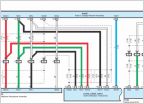-
Welcome to Tacoma World!
You are currently viewing as a guest! To get full-access, you need to register for a FREE account.
As a registered member, you’ll be able to:- Participate in all Tacoma discussion topics
- Communicate privately with other Tacoma owners from around the world
- Post your own photos in our Members Gallery
- Access all special features of the site
12 volt to 9 volt resistors?
Discussion in '3rd Gen. Tacomas (2016-2023)' started by Dcox, Oct 21, 2018.
Page 1 of 2
Page 1 of 2


 RGB Rock Lights - looking for recommendations
RGB Rock Lights - looking for recommendations Aluminum Oil Filter Housing: 15620-31060
Aluminum Oil Filter Housing: 15620-31060 Wiring diagram for backup camera
Wiring diagram for backup camera Blowing Fuse
Blowing Fuse Backup camera relocation for rear swingout
Backup camera relocation for rear swingout
